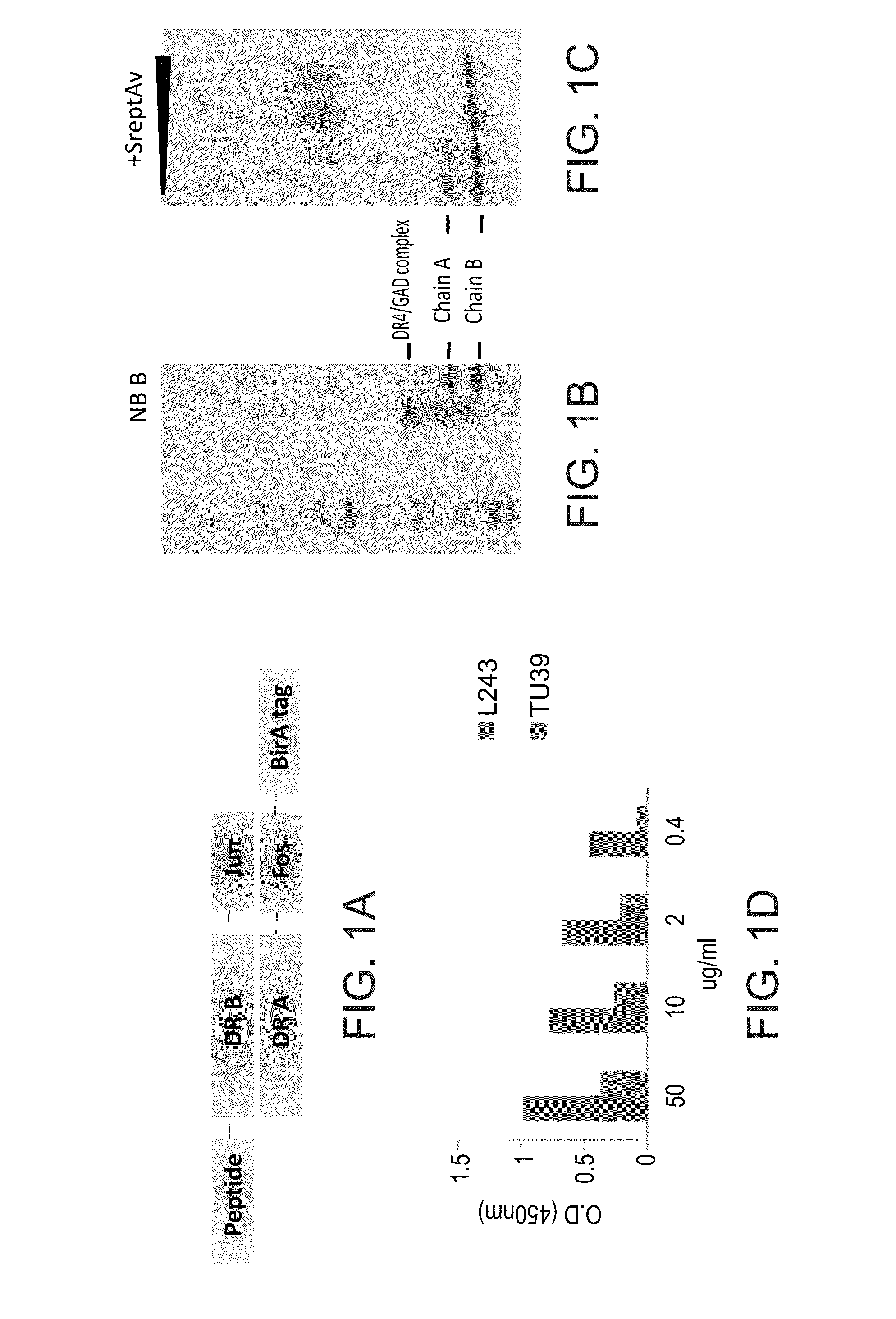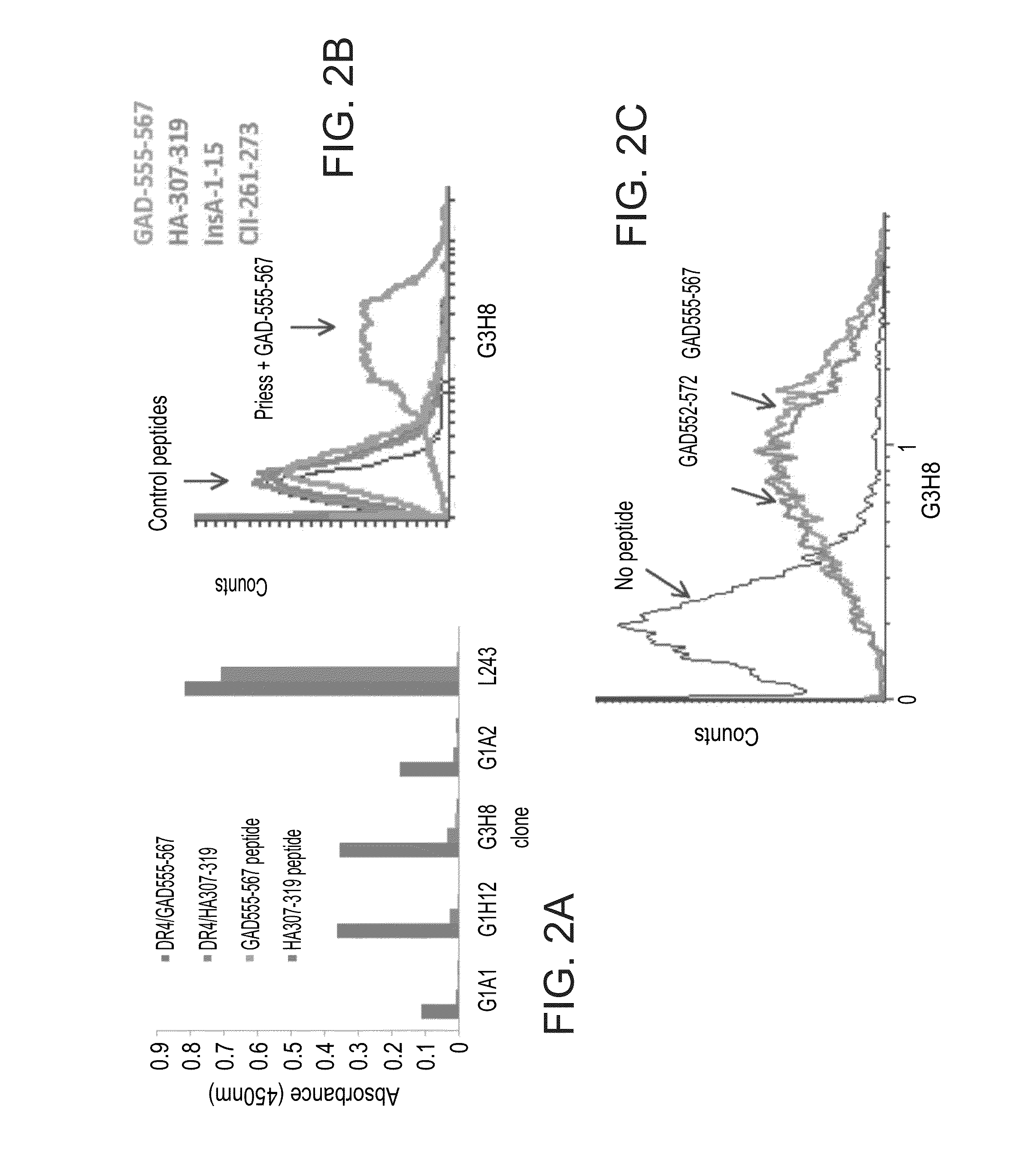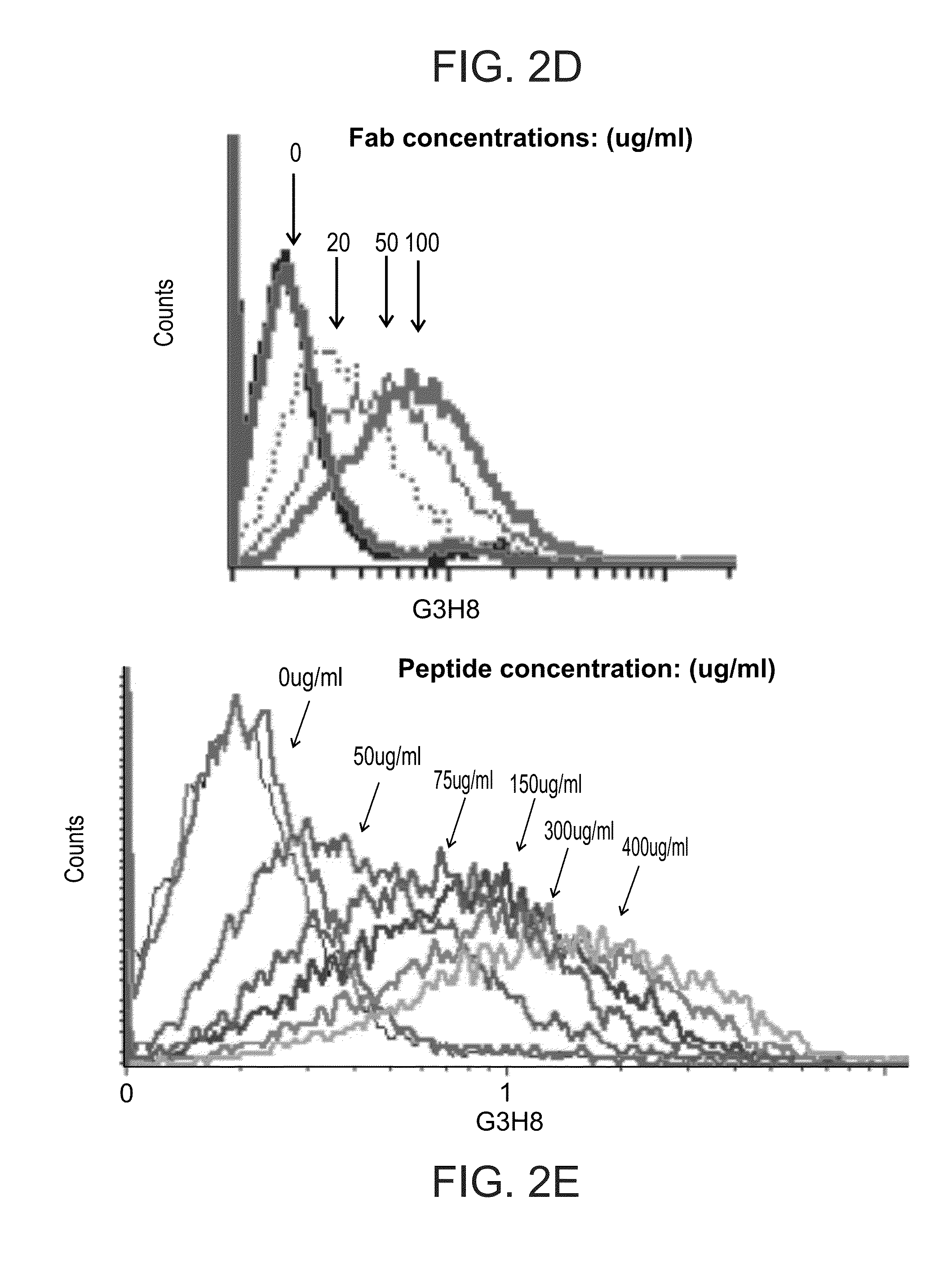Antibodies with t-cell receptor like specificity towards native complexes of mhc class ii and diabetes-associated autoantigenic peptides
a technology of t-cell receptor and antibodies, which is applied in the field of isolated complexes of mhc class ii and diabetes-associated autoantigenic peptides, can solve the problems of dangerously raised blood glucose concentrations and inability to regulate glucose metabolism
- Summary
- Abstract
- Description
- Claims
- Application Information
AI Technical Summary
Benefits of technology
Problems solved by technology
Method used
Image
Examples
example 1
Isolation of Antibodies Specific to Dr4 / Gad555-567 Complex
[0375]For the isolation of TCRLs directed to the native MHC / peptide complexes the present inventors generated a recombinant DR4 / GAD555-567 complex which was used for screening of a phage display antibody library.
[0376]Recombinant DR4 Complexes—
[0377]Four-domain DR4 molecules were generated from a DR4 construct previously reported for expression in insect cells (Svendsen, P., et al., 2004) in which the intracellular domains of the DR-A1*0101 and DR-B1*0401 chains were replaced by leucine-zipper dimerization domains for heterodimer assembly (Svendsen, P., et al., 2004). The antigenic peptide was introduced to the N-terminus of the DR-B chain through a flexible linker. The Bir A recognition sequence for biotinylation was introduced to the C-terminus of the DR-A chain (FIG. 1A).
[0378]Screening of Ab Phage Display Library:
[0379]For selection of Fabs directed to DR4 / GAD555-567 complex the present inventors screened a large Ab phage...
example 2
Fine Specificity of the G3H8 Antibody
[0382]Fine Specificity of G3H8 TCRL Fabs—
[0383]In order to localize the binding residues of the isolated TCRLs within the GAD peptide the present inventors tested the recognition of Preiss cells loaded with a set of hGAD65 altered peptide ligands (APL). A panel of peptides containing substitutions in the GAD65555-567 sequence at TCR contact sites was used. Binding assays of G3H8 to DR4 complexes presenting GAD-555-567 peptides with amino acid substitutions M559Z (P3), 1561M (P5), N563Q (P7), or 1561M(P5)+N563Q(P7), located P5 as essential contact residue for G3H8-DR4 / GAD555-567 interaction. TcR contact P5 position has been shown to be important for TcR5 interactions with this hGAD65 epitope (John A. et al., 2004), emphasizing the TCR-like nature of G3H8Fab. As shown in FIGS. 3A-F, Preiss cells loaded with GAD555-567 containing the single amino acid substitutions M559Z (FIG. 3B) and N563Q (FIG. 3D) obtained similar binding intensity of G3H8Fab as ...
example 3
The Isolated Antibodies of Some Embodiments of the Invention are Capable of Inhibiting Gad-Specific MHC Restricted T Cell Response
[0384]Blocking of GAD-specific DR0401 Restricted T Cell Response—
[0385]The present inventors further tested the ability of G3H8Fab to compete with the cognate TcR interaction with DR4 / GAD complexes presented by APCs and by that to block this activating signal leading to T cells autoreactivity. The present inventors tested if G3H8 can inhibit Ag-specific activation of T cell hybridoma in a peptide-specific HLA-restricted manner. G3H8Fab found to inhibit ˜80% response of G2.1.36.1 T cell hybridoma specific to GAD-555-567 restricted by HLA-DR*0401 (FIG. 4A). Of important, G3H8 do not inhibit H1.13.2 hybridoma response to HA307-319 peptide restricted by HLA-DR*0401 (FIG. 4B). Thus, antigen-specific immunologic tolerance to the autoreactive GAD-epitope was in-vitro demonstrated by G3H8Fab.
PUM
| Property | Measurement | Unit |
|---|---|---|
| Length | aaaaa | aaaaa |
| Affinity | aaaaa | aaaaa |
| Conformation | aaaaa | aaaaa |
Abstract
Description
Claims
Application Information
 Login to View More
Login to View More - R&D
- Intellectual Property
- Life Sciences
- Materials
- Tech Scout
- Unparalleled Data Quality
- Higher Quality Content
- 60% Fewer Hallucinations
Browse by: Latest US Patents, China's latest patents, Technical Efficacy Thesaurus, Application Domain, Technology Topic, Popular Technical Reports.
© 2025 PatSnap. All rights reserved.Legal|Privacy policy|Modern Slavery Act Transparency Statement|Sitemap|About US| Contact US: help@patsnap.com



